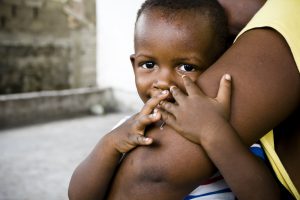A new study by CUNY SPH researchers found evidence of intersectional effects of various systems of oppression on birthweight inequities, identifying U.S.-born Black women as having infants of lower-than-expected birthweights.
For the study, published in Health and Place, PhD graduate Christina Nieves, Distinguished Professor Luisa N. Borrell, Associate Professor Heidi Jones and colleagues used multilevel analysis of individual heterogeneity and discriminatory accuracy (MAIHDA) to examine infant birthweight patterns at the intersection of age, race/ethnicity, education, and nativity status among singleton births in New York City from 2012 to 2018.
Using MAIHDA, an approach that can be used to better understand health inequities, the researchers found that, overall, U.S.-born Black women had infants of lower-than-expected birthweights, with the lowest among U.S.-born Black women aged 30–39 with less than a high school diploma, which suggests this population should be prioritized for policy, programmatic and clinical practice solutions to reducing low birthweight and existing resources should be allocated using an equity-based approach.
“The application of an intersectional framework to health inequities is essential because the social determinants of health inequities are interlocking,” Nieves says. “By considering social strata as a cluster-level variable, we were able to estimate the effect of interlocking systems, rather than individual characteristics, that create inequities. Our findings suggest that the context of social identity, represented by maternal age group, race/ethnicity, education, and nativity status, may play a critical role in the patterns of inequities observed in birthweight. Using this approach, we identified the specific intersectional identities experiencing the greater risk of decreased birthweight in New York City.”
“Our findings suggest that maternal social identity may be a significant factor in the patterning of observed inequities in birthweight,” says Borrell. “Future studies should consider using the MAIHDA approach to examine the effect of intersecting dimensions of social identity on how inequities are patterned as well as to identify their causes and the individuals they affect most.”




